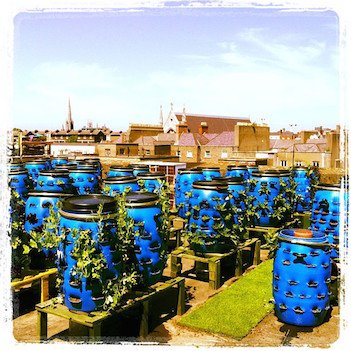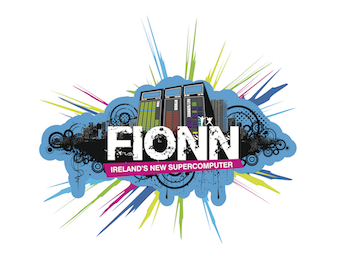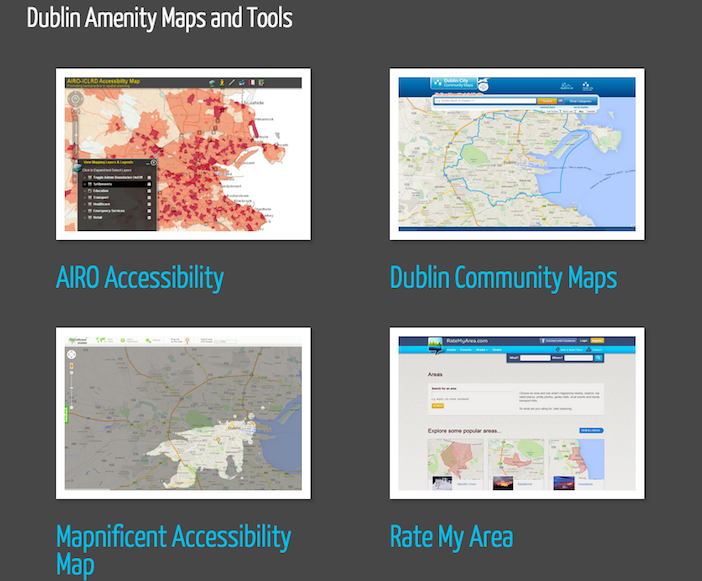Dumb Bins to Smart Cities
The problem with the phrase Smart Cities is that it makes the rest of us sound dumb complained one of the speakers at the Pint of Science Smart Cities night. In fact, the audience were told that Ireland’s agriculture industry is as high tech and smart as it comes. Niel Stewart from Urban Farm told us that Ireland was behind in the area of urban agriculture however and this could make our cities smarter in the most basic of areas – food security. Japan has embraced urban hydroponic farms due to contamination from Fukishima but he advocated embracing urban farming to reclaim the varieties of food we once enjoyed and which disappear with large commercial farms. The heritage project urban farm undertook to grow 180 varieties of potatoes on a rooftop showed that even blight disappeared at a height because of the different growing conditions.

Steward said that roughly 75% of Ireland’s agricultural products are exported and we import 75% again in varieties of crops from abroad. Some of these are products we simply cannot grow in Ireland such as citrus fruits but who hasn’t looked at a bag of potatoes from Egypt and wondered why on Earth are we importing our national vegetable? Not very smart. As we mark out areas for much needed woodland conservation to capture carbon, we should turn to urban spaces to provide food. Rooftops and specially designed hydroponic walls and vertical structures can provide acres of viable food production space. Niel Stewart said that this even has the extra added benefit of reconnecting cities with their food source and how its grown.
The star of the show was undoubtedly Niamh Scanlon, a twelve year old girl who developed an app to show where the nearest available charging point for your electric car is. She learnt her trade over the past three years at coder dojo in DCU and she even has a sleek animation on her product. The ESB provided her with the real time data to say which charging points were in use and her website will help plan your journeys and keep your car charged. Brimming with ideas for expansion and monetisation she was a more confident and eloquent speaker than most of the adults. More than anything Niamh Scanlon made us excited about the generation that comes next and what they might do to bring about smart cities and a smarter humanity.
Smart bins were a topic thrashed out in conversation and Seamus Devitt of SmartBin explained how his company uses sensors to monitor when commercial bins should be emptied in over thirty countries. He works with glass recycling bins, charity clothing bins, restaurant cooking oil disposal bins and much more. Bins aren’t sexy but they are a huge concern in cities and any smart city plan needs to include them. Dublin City Council Green Business Officer noted that solar compactor bins were being rolled out in certain areas of the city. He tackled the question of what happened to the Dublin wifi project (turns out the company who won the tender Gowex was faking their accounts) but said that a new tender for Dublin wifi will happen. One of the key problems for rolling out a Dublin Smart City is the cost. Solar street lights are great but having to replace 48,000 lights is an expensive investment regardless of the savings that can be made in electricity bills. Smart Cities require smart planning and certain economies can be made. If somebody is up on a ladder installing a solar light it cuts costs to also have them install a wifi hotspot at the same time. The DCC rate of progress towards Dublin as a Smart City may not be as fast as we’d like but the gradual approach gets things done in a tough economic situation. The solar bins and lights are a good solution to a problem which Dr. Domhnaill Hernon from Bell Labs tackled at Pint of Science – Battery power. He told Pint of Science that the internet of things, while much discussed for many years now, hasn’t happened because the sensors require battery power. He demonstrated one of ways in which kinetic energy can be used to power led lights and a battery that Bell Labs is developing.

Energy consumption is certainly a huge obstacle to Smart Cities. The more devices connected to the internet and ways in which we use it, the more power is needed to run data centres and supercomputers. Dr. Simon Wong and Dr. Michael Lysaght from Irish Centre for High End Computing work with Ireland’s super computer FIONN and described the future and limits placed on supercomputers. Smart Cities are inextricably linked to sustainable energy sources because of these problems. If the planet wants to continue becoming tech smart, it also needs to be smart about environmental problems.
The project we were itching to use the most at Pint of Science was NUI Maynooth’s Dublin Dashboard. They connect with a range of services and data sets to bring fantastic visualised smart city info not that dissimilar to data projects we featured on HeadStuff last week. Dublin Dashboard work with the people who control this data on the provision that the result is free and available to the public. Realtime information on traffic times, Dublin Bikes, and car parking spaces in Dublin is all available on the website. There are also maps on population numbers and employment stats. If you’re curious about planning applications on your street you can check those out on a weekly updated map. City watch lets you report a problem in your area to DCC and get an update and photo when that problem is fixed. Want to know what the waiting time on hospital trolleys are? Go to Dublin Dashboard.

It’s a fantastic resource so why isn’t it more widely known? The answer is twofold: there’s the problem the audience at Pint of Science raised that there is no coherent message for Dublin as a Smart City. The DCC rep agreed and said that real targets are needed to provide a message such as carbon neutral by 2050 for example. A target unifies the message and allows for a simple one directional campaign – Our smart city will achieve X and these are all the ways we are moving towards that goal and how you can participate. The piecemeal of services, all of which are great, need a champion to bring these all together in a virtual umbrella such as Dublin Dashboard. So why isn’t Dublin Dashboard publicised more by DCC? Why don’t we see it on buses and DART lines? The second part of the answer is that Dublin Dashboard is an academic project. The researchers at Maynooth are interested in the problems encountered in sorting and presenting data for Smart Cities. Professor Rob Kitchin gave the example of a map showing the economically disadvantaged areas of a city. Depending on the parameters used to collect the data some areas may fall into the category of receiving aid or not. A simple recalculation can cause a whole area to lose a range of services. Dublin Dashboard represents the friction between the academics interested in important questions surrounding data manipulation in smart cities and the citizens like me who want a smart city now if not yesterday. In the meantime we can use Dublin Dashboard website but hopefully DCC will soon provide us with a coherent target message to rally the troops and a service like Dublin Dashboard will be streamlined, promoted, and become available in an app format.
